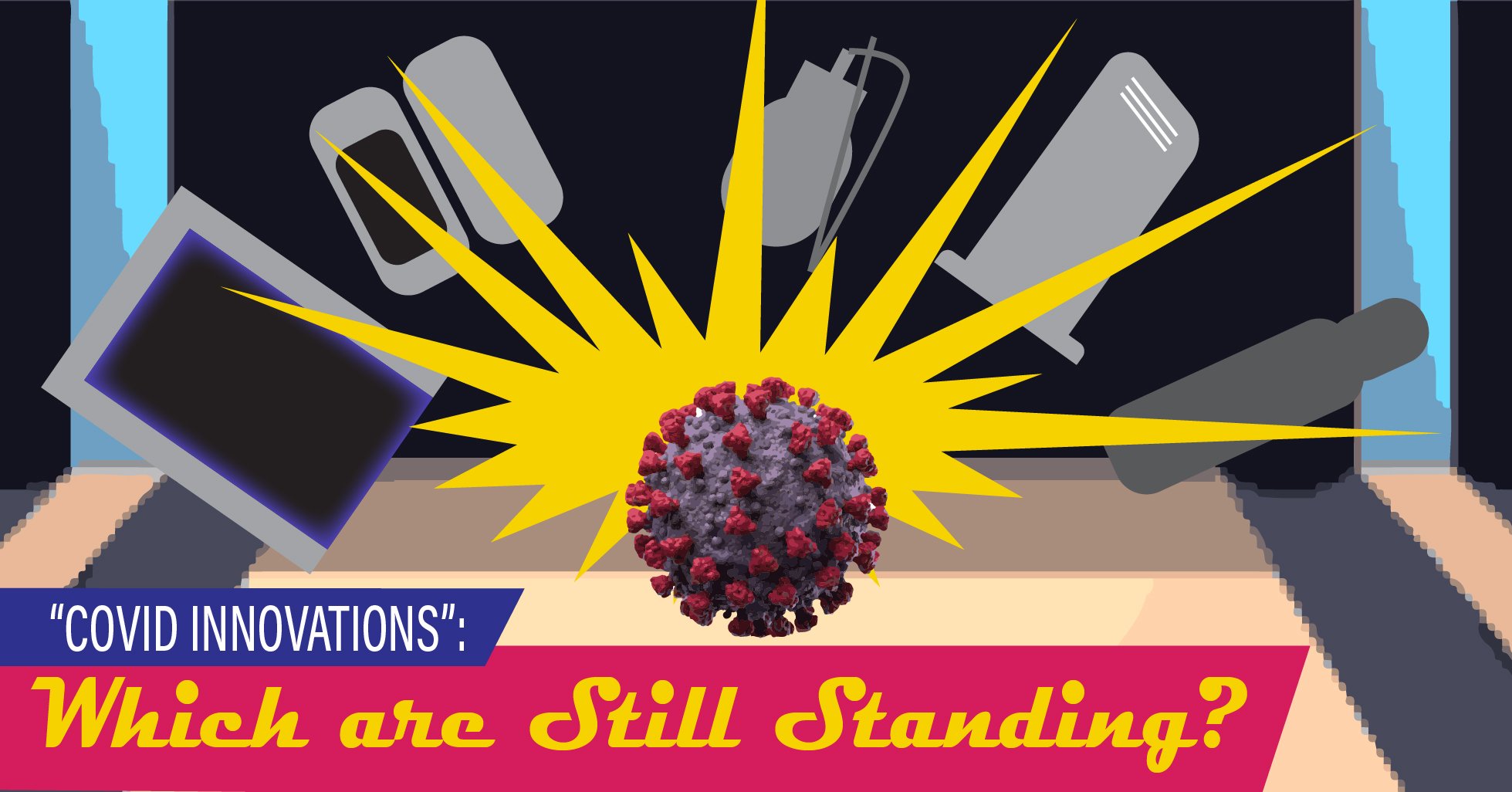"COVID Innovations": Which are Still Standing?

 Remember back in 2020, when the COVID pandemic was still new, and we were all getting used to lockdowns, social distancing, and masks? Many of us will also remember that as a time of so-called "COVID products," items designed and marketed to take advantage of the general public's desire for safety. People were willing to spend money on products that sounded like they could help keep the virus away, and included flagrant misinformation that led a few companies into legal troubles. More pernicious, and therefore more dangerous, were the products that seemed like they were backed by science and that were adopted by well-meaning companies and consumers. In today's post, we'll look at some of those seemingly innovative and cutting-edge products that turned out to be just as ineffective as some of the crazier products - and those that stood the test of time, and science.
Remember back in 2020, when the COVID pandemic was still new, and we were all getting used to lockdowns, social distancing, and masks? Many of us will also remember that as a time of so-called "COVID products," items designed and marketed to take advantage of the general public's desire for safety. People were willing to spend money on products that sounded like they could help keep the virus away, and included flagrant misinformation that led a few companies into legal troubles. More pernicious, and therefore more dangerous, were the products that seemed like they were backed by science and that were adopted by well-meaning companies and consumers. In today's post, we'll look at some of those seemingly innovative and cutting-edge products that turned out to be just as ineffective as some of the crazier products - and those that stood the test of time, and science.
For the purposes of this post, let's skip those products that were so outlandish as to be relegated into the trashbin of memory. Here are the product categories that promised so much, and delivered so little.
1. Personal UV Equipment: From cases to "sanitize" your cell phone to door-sized portals to kill viruses on your skin and clothes, UV light tried to enter the mainstream. Swayed by scientific claims, consumers jumped at chance to bring this futuristic concept into their homes and businesses. As time went on, however, evidence demonstrated that these products did not work as promised. The wavelength of UV necessary to keep people safe from overexposure was not strong enough to sanitize, let alone disinfect, our devices or our bodies.
2. Chemical Coatings: Consumers were well-aware of sprays and wipes to disinfect their homes and workspaces. New on the scene, however, were spray-on coatings that claimed to have residual efficacy, killing bacteria and viruses for hours after application. Even huge corporations, such as airlines and public transport, adopted some of these technologies in hopes of reassuring customers and encouraging more travel. As follow-up studies were conducted, results indicated that the residual efficacy was negligible, as coatings could not stand up to the increased use or did not sustain efficacy levels as promised.
3. Antimicrobial Additives: Ah, yes. The ever-present "antimicrobial additive" that protects the product from mold, mildew and odors. During COVID, many products emerged that tried to take these claims further, implying that these active ingredients could kill SARS-CoV-2 as well as other viruses. After regulators could clamp down on these claims, consumers slowly became aware of the limitations of these products, There is still much ground to cover with the general public, who may not know how to distinguish public health claims from misleading or even fraudulent claims.
Now that COVID has receded and we are not longer functioning under a public emergency, we are beginning to see which products were effective enough to maintain consumer trust - those that existed before the pandemic, following ethical research and development, and completing EPA-registration protocols.
1. Healthcare UV Equipment: Hospitals continue to use UV technology during terminal cleaning. Healthcare-grade emitters use wavelengths that are strong enough to kill microorganisms within line-of-sight, requiring an empty room and 45-60 minutes of exposure.
2. EPA-Registered Disinfectants: Sprays and wipes that go through the rigorous EPA-registration process are still the go-to products for both healthcare and the general public. Clear labeling, instructions, and limitations help all consumers select the correct product for the job, giving consistent results.
3. Preventive | Biocidal Surfaces: Copper and copper-infused surfaces continue to provide 24-hour biocidal activity in patient rooms and healthcare workstations. Emerging around 2012-2014, these products have stood the test of time as well as the tests of the Environmental Protection Agency and numerous clinical trials around the nation. Currently, preventive biocidal products include copper alloys and EOScu, a copper-infused synthetic surface.
What crazy products do you remember from the heights of the COVID pandemic? Did you try any yourself? Or did you spend a lot of time trying to educate people around you about what actually works? Share your experiences in the comments below!
![EOScu Logo - Dark - Outlined [07182023]-01](https://blog.eoscu.com/hubfs/Eoscu_June2024/Images/EOScu%20Logo%20-%20Dark%20-%20Outlined%20%5B07182023%5D-01.svg)




